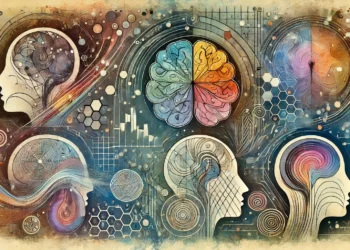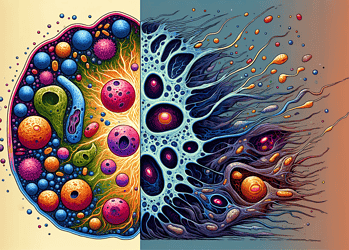
The lack of expression of a certain protein in the skin is associated with acne, according to a new study published today in Nature Communications. According to the authors, new treatments that promote the growth of this newly significant protein could be developed as a result of the research.
New insights into acne reveal potential treatment targets
Acne is arguably the most common skin condition in the world, affecting at any time about 650 million people. The skin disease typically occurs when oil glands become clogged, forming spots, pimples, and sometimes cysts. However, there are still many unknowns about acne formation.
“Although acne is one of the most common dermatological conditions, its pathogenesis remains incompletely understood,” Dr. Christina Philippeos, Research Associate in the Centre for Stem Cells & Regenerative Medicine at King’s College London, told ZME Science.
To learn more about acne, Philippeos and colleagues investigated whether GATA6 (GATA-binding protein 6), a protein expressed in the hair follicle, might be involved in any way. There were some hints that it is.
Previously, another group showed that when this protein is switched off in epidermal cells that line the pilosebaceous unit (a structure that consists of the hair follicle and sebaceous glands), lesions would form filled with acne-like material.
To learn more, the researchers examined skin biopsies from five healthy volunteers and nine patients with different degrees of acne severity. Upon examination, they found that healthy people had high levels of GATA6 while acne cases had reduced GATA6 levels.
Back in the lab, the researchers developed a human sebaceous organoid model that ultimately showed that GATA6 is involved in several physiological processes that regulate the upper pilosebaceous unit (PSU). One such process has to do with the production and differentiation of keratinocytes, which are the primary, most common cells found in the outermost layer of the skin.
“Acne is a disease specific to humans and no animal model recapitulates its pathological features fully. Therefore, acne research has relied heavily on translational histopathological studies and cell-based studies. It can be quite a challenge to show that the findings seen in vitro are representative of the disease in humans. Moreover, accessing histological samples of acne skin is difficult, as this requires patient biopsies, usually performed on the face. Nevertheless, we really enjoyed the technical challenge of creating small sebaceous 3D organoids and isolating hair follicles from fresh human skin (obtained from plastic surgery waste) to create in vitro mini-organ cultures to silence GATA6 in these PSUs,” Philippeos told ZME Science.
What’s more, GATA6 modulates immunological signals that contribute to the inflammatory pathways seen in acne and may also prevent the formation of clogged pores.
But perhaps most importantly, the researchers found that the expression of GATA6 was induced by retinoic acid, a product that is used in some acne treatments.
“Our study shows that isotretinoin partially works through GATA6 induction. Therefore, there is already a GATA6 based treatment! But our study is still in the discovery science phase. GATA6 has never been implicated in acne pathogenesis before. Further research is needed to identify which compounds may specifically stimulate GATA6 expression in acne patients, before treatment may go to trial,” Philippeos said.
In the future, the researchers plan on doing more research into the role of GATA6 in the human skin. Meanwhile, Philippeos recommends systemic isotretinoin to treat acne, which she refers to as the “current gold standard treatment” but which also has multiple side effects.
“This study shows the public that the development of acne is a complex, multifactorial process. It is still not fully understood, but this finding sheds more light on these processes, which could open up new avenues for the research and treatment of this disease,” she concludes.






